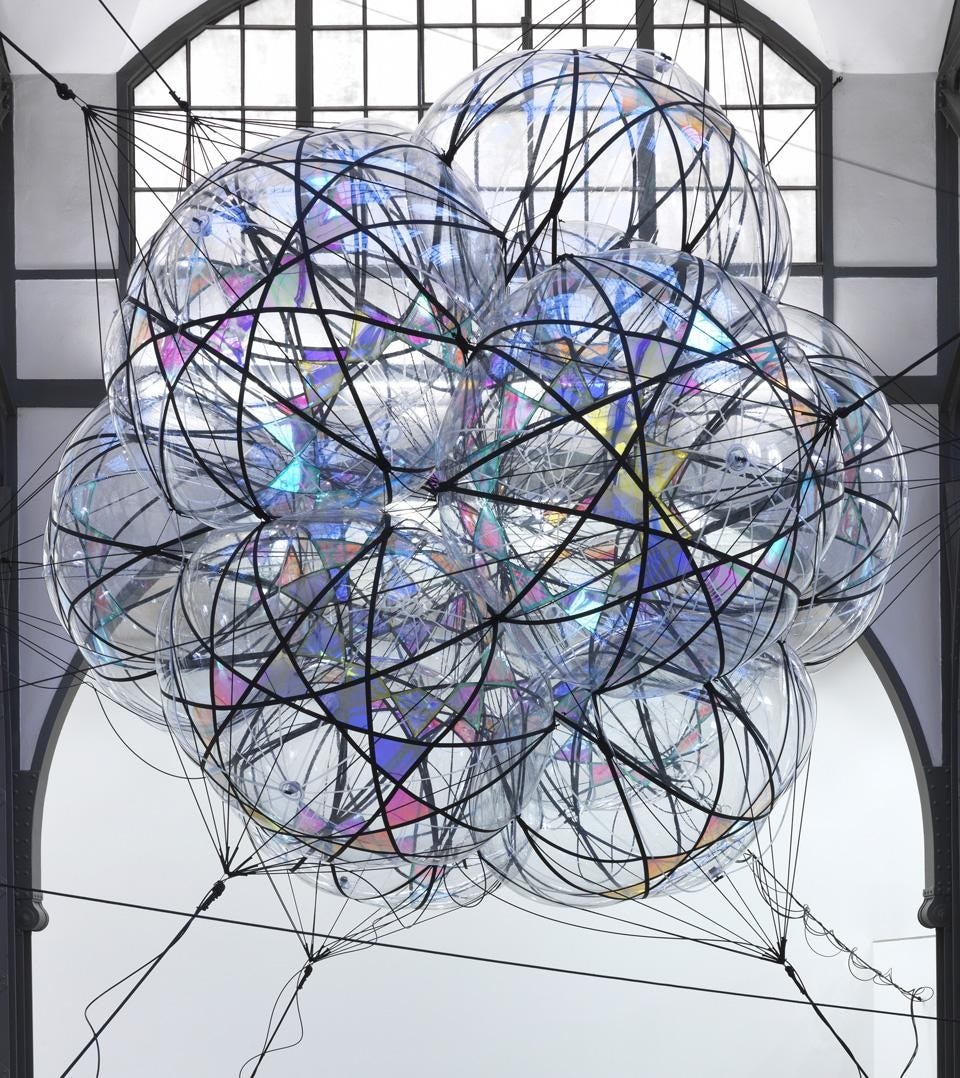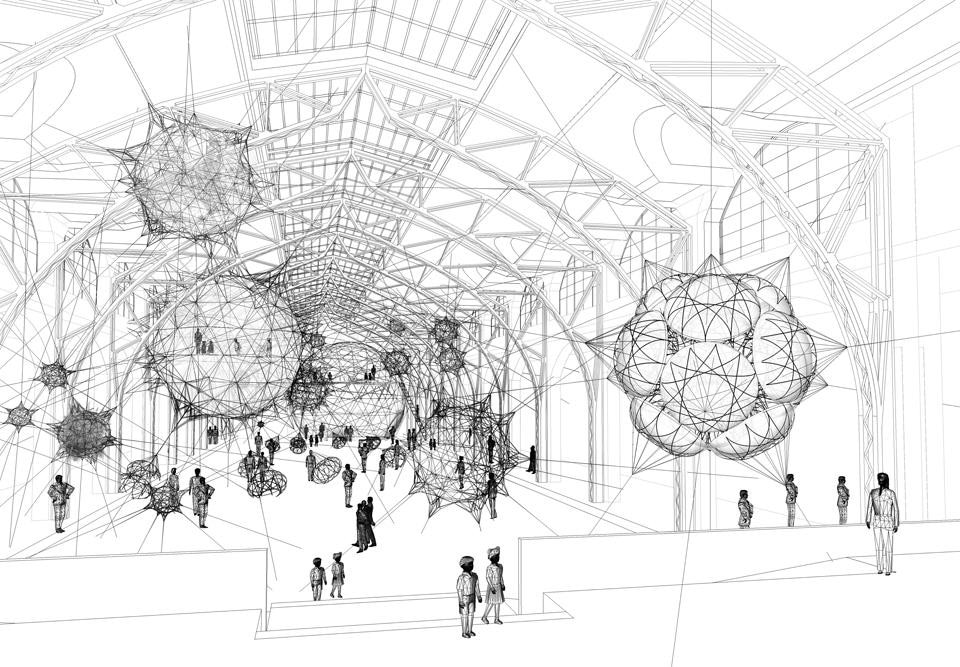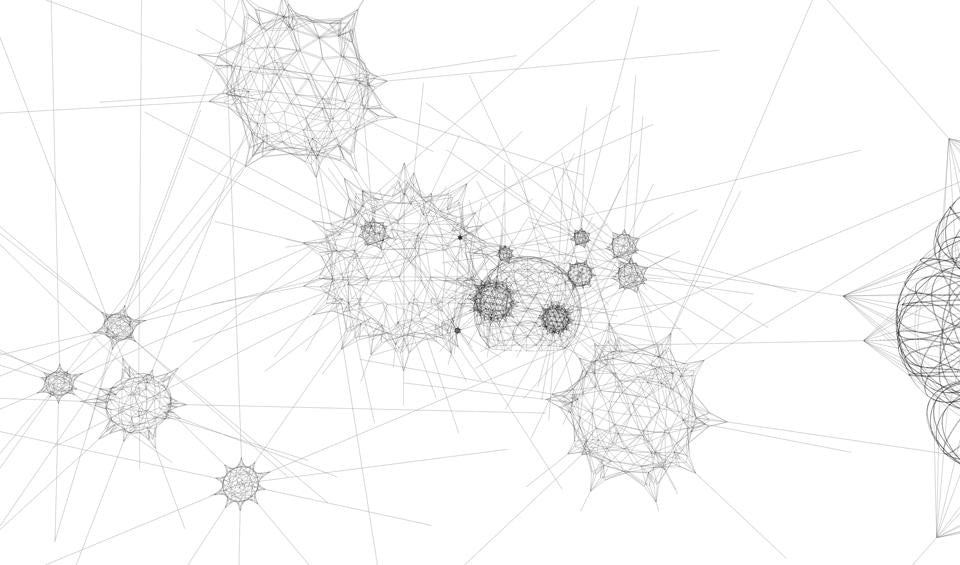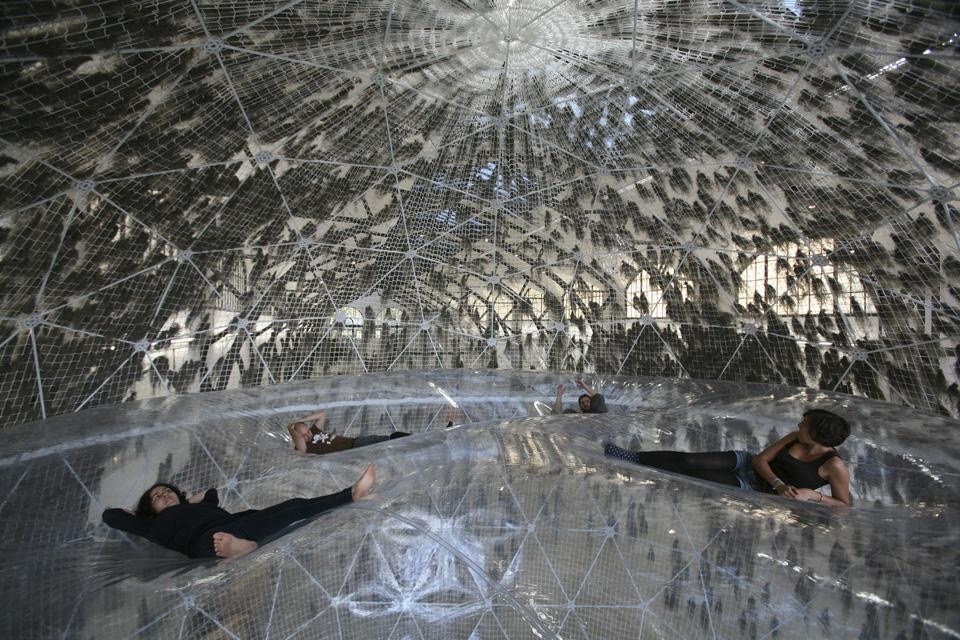Cloud Cities—a giant installation, which occupies the main exhibition hall—is built for effect. A filigree of flying spheres caught in a maze of cobwebs, the show is reminiscent of both Buckminster Fuller's domes and Alex Raymond's hanging gardens. Some spheres harbor plants, some are grouped together into Weaire–Phelan structures, and others stand alone, big enough for the visitor to enter.


The same pattern is reproduced in all levels of the structure, from its micro to its macro components, forming what one can call a neo-platonic cosmic schema. Saraceno often works with self-similarity...
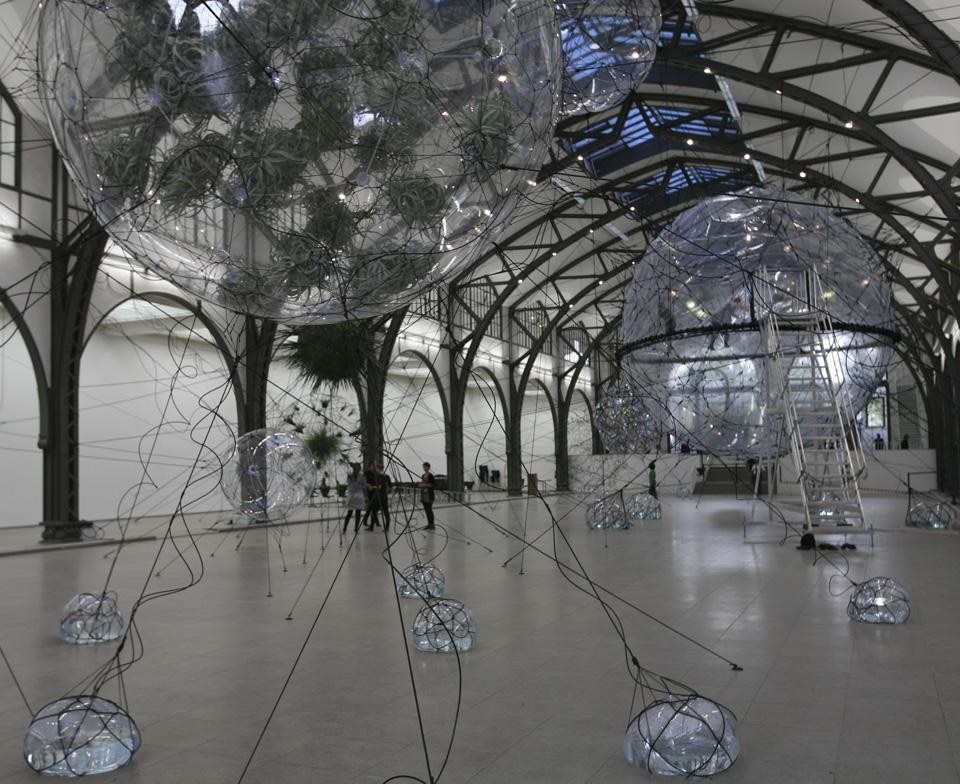
Ana Teixeira Pinto

